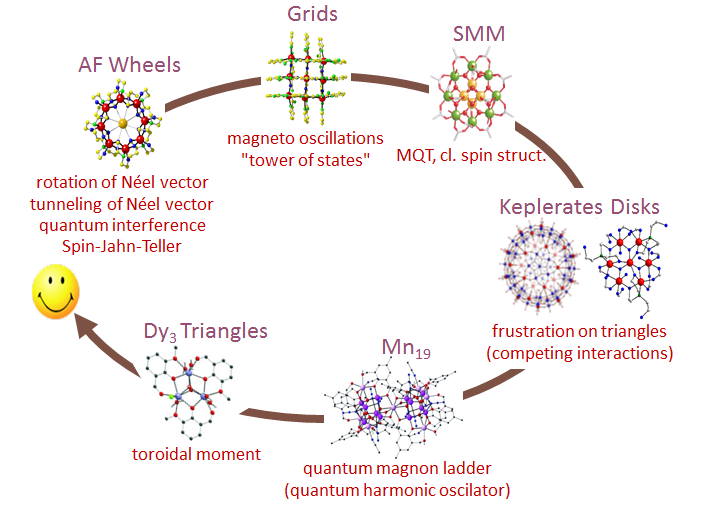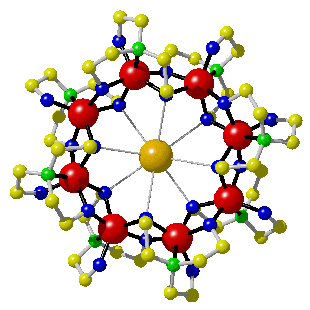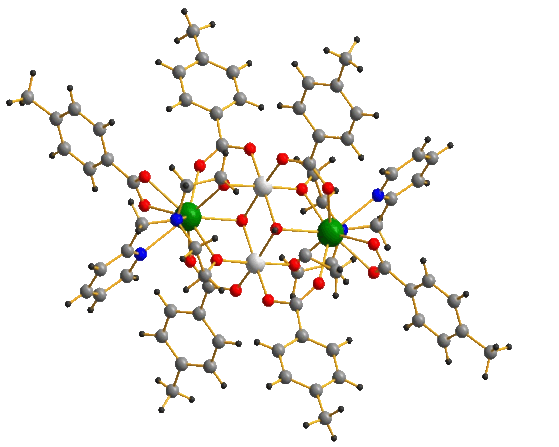Introduction
The focus of this group is to study molecular nanomagnets and to experimentally test how quantum mechanics and quantum statistics work in a well-defined group of interacting quantum components. The interactions among these quantum entities give rise to intriguing phenomena, despite having a theoretically predictable Hamiltonian.
Single Molecule Magnets (SMMs) at the nanoscale represent a subset of molecular nanomagnets known for their unique capacity to preserve magnetic information. This distinctive characteristic holds significant potential for revolutionizing information storage applications, particularly in the context of quantum bits (qubits) at the molecular scale. Beyond theoretical interest, The intrigue surrounding SMMs extends to different practical applications in quantum information technologies.
Why Molecular Nanomagnets?
Molecular nanomagnets are molecular complexes in which several magnetic transition-metal ions are clamped together by organic ligands such as to form well-defined clusters. Molecules have been synthesized with as many as 84 metal ions, but typically the number is in the range of 6-20. Typical metal ions are Cr, Mn, Fe, Ni, or Cu.
Why are these molecules of interest? First of all, they are truly aesthetically pleasing. The gallery on the left of molecules just demonstrates this. However, there are of course also good scientific reasons for studying them. On the one hand, the size is on the order of a few nanometers, i.e., these molecules are truly nano-materials. On the other hand, the prominent physical properties, such as their magnetism, sometimes are strikingly quantum mechanical while at other times very classical, i.e., these molecules are truly in the crossover regime between the quantum-mechanical and classical world. The combination of these two aspects, nano-size and quantum-mechanical-vs-classical is,arguably, the most fascinating aspect (as regards to physics) of these molecules. Moreover, considering conventional electronics, it is hard to imagine future molecular electronics without molecular magnetism. Magnetic functionality at a molecular level has obviously a high potential for new applications. Even applications in quantum information technology are suggested. For instance, they may be used as qubits, the elementary units of quantum computers. Last but not least, the topic of the molecular nanomagnets is a rather new and a very vibrant research field. Research into molecular nanomagnets essentially started only in 1993, with the discovery of slow magnetic relaxation in the molecule Mn12.
Mn12 hence became by far the most famous magnetic molecule; thus a little bit more on it. Below a blocking temperature of about 3.5 K, Mn12 exhibits slow relaxation of the magnetization, with a relaxation time of about one month at 2 K. This, and the observation of quantum tunneling of the magnetization, were identified to be of purely molecular origin, and the term single-molecule magnets (SMMs) was coined for this class of moleclar nanomagnets. Not surprisingly, this discovery immediately raised great expectations, e.g., for potential applications. One Mn12 molecule, which contains only 12 magnetic centers, is in principle able to store one bit of information. This is orders of magnitude smaller than nanoparticles of conventional ferromagnets, which typically contain 104 or more magnetic metal centers. The SMMs are in fact the smallest entities known, which allow us to store one bit of information magnetically.
The discovery sparked a flurry of research activity in physics and chemistry, in both experiment and theory. Since then, the field of molecular nanomagnets has experienced tremendous growth, with an increasing number of interesting magnetic molecules synthesized and novel physics explored.



